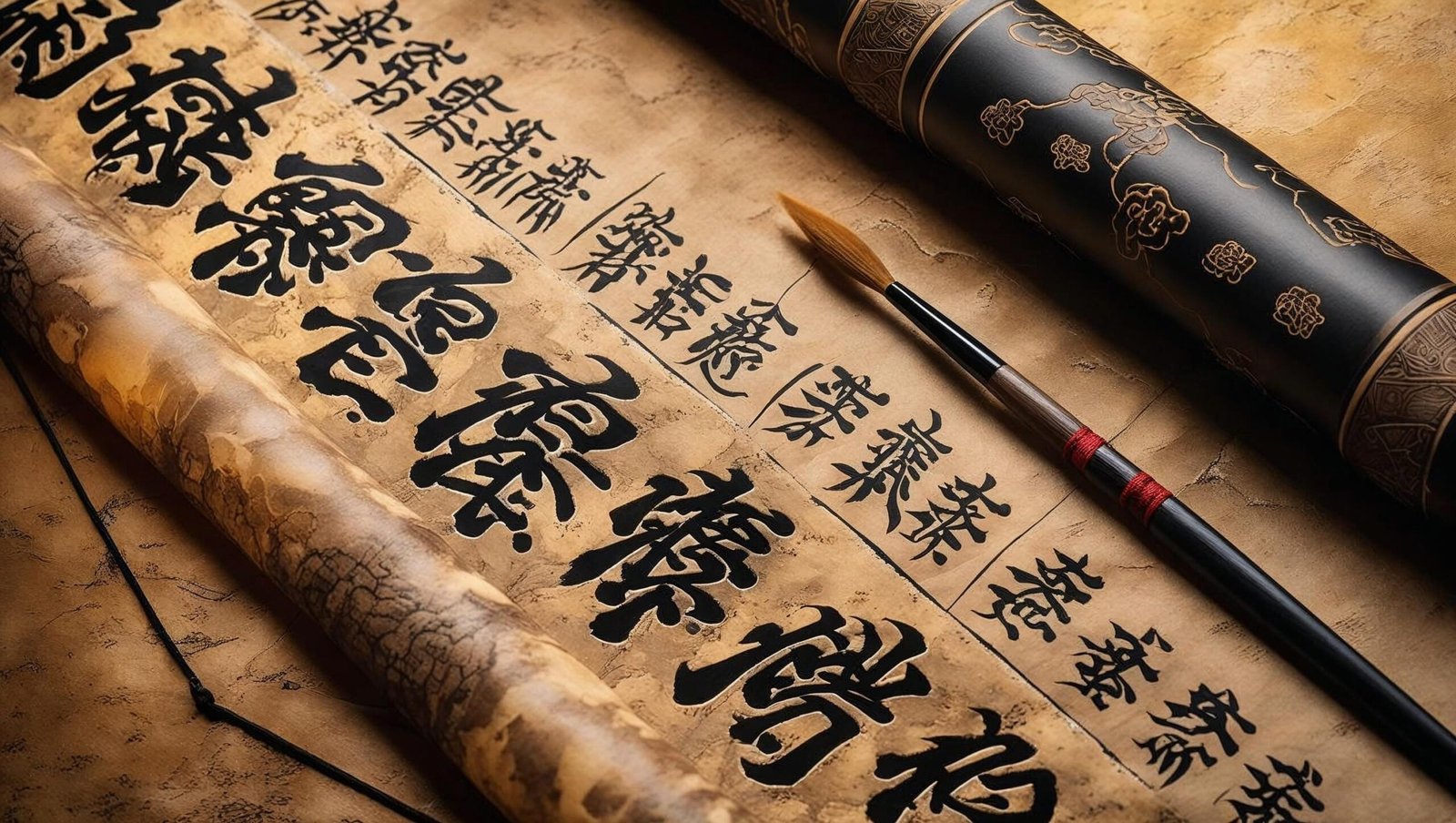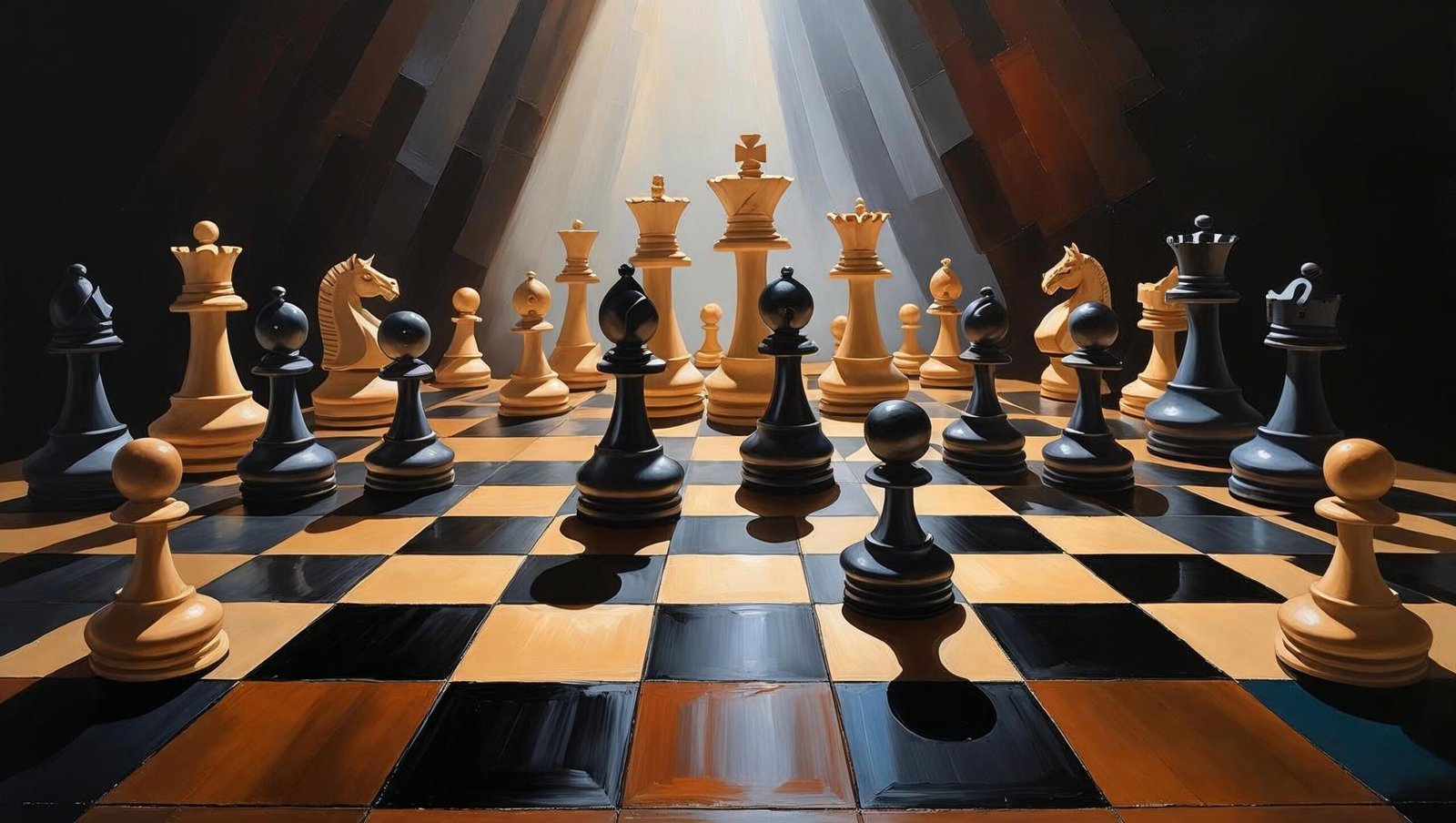Introduction
In the shifting landscapes of global commerce, corporate warfare, personal relationships, and political maneuvering, few texts have sustained their relevance like The Art of War by Sun Tzu. Written more than two millennia ago, this Chinese classic continues to be cited in business boardrooms, sports strategies, leadership seminars, and startup cultures. But why has a book rooted in military philosophy stood the test of time in such diverse fields?
The Art of War is not merely a guide to warfare—it is a manual for mastering human conflict and achieving goals with wisdom. Its author, Sun Tzu, a legendary military strategist believed to have lived in the 5th century BCE, distilled the essence of war into 13 concise chapters, each filled with principles that transcend the battlefield. His teachings are terse, profound, and often paradoxical. They demand contemplation and reward the reader with clarity.
The book is premised on a deep understanding of psychology, deception, and the dynamics of power. It emphasizes mental discipline, preparation, adaptability, and the necessity of understanding both oneself and one’s adversary. Whether applied to military campaigns, corporate competitions, or personal development, the timeless principles within The Art of War offer a blueprint for strategic excellence.
In this comprehensive review, we delve into the historical context of The Art of War, decode its structure, and extract ten of its most enduring lessons. We explore how these lessons apply beyond the realm of war—into business, politics, sports, and self-improvement. This review is crafted to not only analyze but also inspire you to revisit this classical masterpiece.
Let us begin the strategic journey through one of history’s most influential texts, and see what The Art of War teaches us about winning with wisdom.

Lesson 1: Strategic Planning Before Engagement
Sun Tzu’s opening chapters emphasize that success in war is not about impulsive action, but deliberate preparation. The hallmark of a wise leader, according to The Art of War, is one who achieves victory before the battle begins. This philosophy underscores the power of planning, assessing both strengths and weaknesses, and creating a well-informed strategy that minimizes risk and maximizes opportunity.
Preparation involves understanding the battlefield in the broadest sense. This includes awareness of the environment, the morale of the troops, the strength and disposition of the enemy, and internal cohesion. It is not enough to react; one must anticipate. Sun Tzu’s emphasis on forethought teaches that winning is often the result of unseen efforts made long before confrontation.
This principle holds immense relevance beyond traditional warfare. In the corporate world, it translates into market research, business planning, competitive analysis, and contingency preparation. In personal life, it encourages individuals to cultivate awareness, readiness, and discipline before entering any challenging situation—be it a job interview, negotiation, or relationship conflict.
The first lesson from The Art of War serves as a foundation: all battles are won or lost before they are fought. Strategic planning is not optional—it is essential for anyone who seeks success through intelligence rather than brute force.
Lesson 2: The Power of Knowing Yourself and the Enemy
Few principles in The Art of War are quoted as often as Sun Tzu’s counsel on knowledge: “If you know the enemy and know yourself, you need not fear the result of a hundred battles.” This aphorism is not only poetic but also foundational. It speaks to the dual pillars of self-awareness and situational awareness—both indispensable for strategic mastery.
To know oneself is to understand one’s capabilities, limitations, motivations, and vulnerabilities. It involves sober reflection, rigorous honesty, and continual assessment. Without this internal clarity, a commander—or a leader in any field—risks overreach, complacency, or blind confidence. Conversely, to know the enemy is to understand their tactics, temperament, goals, weaknesses, and decision patterns.
Sun Tzu emphasizes that most conflicts are won not through brute force but through superior insight. Intelligence gathering, observation, and inference are core strategic activities. He writes, “All warfare is based on deception,” implying that those who fail to see through the illusions of their opponents are destined to fall into traps.
In business, knowing your competition is essential. What are their strengths? Where are their weak spots? How do they position themselves in the market? But equally vital is knowing your own brand, leadership style, core offerings, and risk thresholds. Without this dual awareness, even the best tools and resources may be squandered.
This lesson from The Art of War urges us to invest in preparation not through action alone, but through comprehension. It warns against arrogance and encourages humility, discipline, and introspection. Whether negotiating a deal, preparing for an exam, or leading a team through uncertainty, the wisdom of knowing yourself and your opponent remains a timeless strategic principle.
Mastering this dual vision is perhaps the most transformative lesson of The Art of War.

Lesson 3: Deception as a Strategic Tool
One of the most striking principles from The Art of War is its insistence that “all warfare is based on deception.” Sun Tzu repeatedly returns to this idea, suggesting that misleading an opponent is not just a tactic, but a central tenet of strategic thinking.
To deceive effectively is to shape the enemy’s perception—to influence their decisions without direct confrontation. Sun Tzu encourages commanders to appear weak when strong, and strong when weak; to seem near when far, and far when near. This manipulation of visibility and intent allows a strategist to control the enemy’s expectations and provoke mistakes.
In the military context, such deception might involve feigned retreats, decoy forces, or misinformation. But the principle is broadly applicable. In the corporate world, it could translate into product secrecy, surprise launches, or controlled leaks. In politics, it might involve signaling one policy while pursuing another behind the scenes.
Deception is not inherently unethical within Sun Tzu’s philosophy—it is a disciplined craft. It demands a deep understanding of human psychology and situational context. The key is subtlety. Crude manipulation can backfire. Effective deception works like a shadow—it is there, but not obvious.
What The Art of War teaches is that misdirection is a form of control. By mastering deception, one takes the initiative, setting the terms of engagement. The opponent is kept reactive, unsure, and ultimately disadvantaged.
This lesson challenges us to consider not just what we do, but what we allow others to see. Perception can be more powerful than reality. And in the strategic realm, controlling perception can be the difference between victory and defeat.
Thus, deception, far from being a trick, becomes a discipline—one that, when wielded wisely, secures advantages no brute force could attain.
Lesson 4: Adaptability and Fluidity in Strategy
Sun Tzu’s emphasis on adaptability is a cornerstone of The Art of War. He states, “Water shapes its course according to the nature of the ground over which it flows; the soldier works out his victory in relation to the foe whom he is facing.” This metaphor reveals one of the most profound teachings of the text: rigidity is the enemy of victory.
Victory does not belong to the strongest or most aggressive but to the most adaptable. Just as water finds its way through cracks and adjusts its shape to any container, so must a strategist adapt to shifting conditions. Sun Tzu urges generals to be like water—flexible, responsive, and ever-changing.
This lesson extends far beyond the battlefield. In business, adaptability can mean responding to market shifts, customer feedback, or technological disruption. In personal development, it might involve changing goals, updating habits, or shifting perspectives in the face of failure. In politics and diplomacy, it can mean recalibrating policies or alliances as global currents change.
Sun Tzu warns that predetermined plans can become traps if followed blindly. He writes, “Do not repeat the tactics which have gained you one victory, but let your methods be regulated by the infinite variety of circumstances.” In other words, yesterday’s solutions may not work for today’s problems.
Strategic mastery requires dynamic thinking. It demands that one constantly reassess, modify, and evolve. Adaptability is not a sign of weakness, but of intelligence and strength.
The Art of War teaches that those who survive and thrive are those who are attuned to change. By learning to adapt—quickly and wisely—we gain not only a tactical edge but a philosophical one as well. In the grand theater of life and conflict, it is the fluid who flourish.

Lesson 5: The Importance of Leadership Qualities
Sun Tzu repeatedly emphasizes the centrality of leadership in determining the outcome of conflict. He writes, “Regard your soldiers as your children, and they will follow you into the deepest valleys; look upon them as your own beloved sons, and they will stand by you even unto death.” This striking call to empathetic and moral leadership speaks to the commander’s role as both strategist and steward.
Effective leadership, in The Art of War, is not about dominance—it is about clarity, discipline, and care. Sun Tzu lists five traits that can lead a general to ruin: recklessness, cowardice, a hot temper, a delicate sense of honor, and over-solicitude for his troops. These traits reflect emotional imbalance and a failure to prioritize the mission.
A successful leader must balance compassion with resolve, adaptability with discipline, and vision with action. They must inspire confidence, establish order, and cultivate loyalty. This applies equally to military commanders, business executives, political leaders, and educators.
The quality of leadership determines the effectiveness of strategy. Even the best plans can fail under poor leadership, while a good leader can turn flawed plans into success through execution, motivation, and adaptation. Leadership, then, becomes the hinge upon which all strategic efforts swing.
The Art of War teaches that strategic outcomes are a reflection of leadership character. Those who lead with wisdom, courage, and care shape not just battles—but the destiny of their teams and institutions.
Lesson 6: The Significance of Terrain and Environment
Sun Tzu dedicates a substantial portion of The Art of War to the strategic importance of terrain. He identifies different types of ground—accessible, entangling, temporizing, narrow, steep, and treacherous—and explores how each influences tactics and outcomes. Understanding the terrain is not optional; it is fundamental.
Terrain determines movement, visibility, supply lines, and even morale. In battle, a general must adapt to the contours of the land just as a leader must adapt to the landscape of business, politics, or personal life. Failure to grasp environmental factors often leads to disaster.
In the modern world, “terrain” could mean market conditions, regulatory environments, technological platforms, or geopolitical realities. For a startup, terrain might be a saturated industry or a novel niche. For a political campaign, it might be the media landscape or voter demographics.
The key lesson is that effective strategy begins with observation and situational awareness. As Sun Tzu notes, “He who knows the terrain and uses it with advantage will always prevail.”
Victory comes not from overpowering the environment but from harmonizing with it. Strategic brilliance lies in reading the landscape—physical or metaphorical—and aligning one’s actions accordingly. It is not enough to fight hard; one must fight smart, and that begins with knowing the ground beneath one’s feet.
The Art of War reminds us that mastery of context is a prerequisite for any form of success.

Lesson 7: Timing as a Decisive Element
In The Art of War, timing is not just a tactical detail—it is a decisive element of strategic execution. Sun Tzu makes it clear that success often hinges on doing the right thing at the right moment. “He who knows when he can fight and when he cannot will be victorious,” he writes. This line distills the importance of judgment, patience, and opportunity in the art of strategy.
Timing involves waiting for the ideal conditions to strike and recognizing the moments when restraint is wiser than aggression. Sun Tzu advises leaders to act only when the odds favor them and to refrain when they do not. This principle discourages impulsive action and instead advocates for disciplined observation.
The wisdom of timing applies universally. In business, launching a product too early can lead to failure just as surely as missing a critical market window can. In politics, speaking or acting prematurely can erode support or backfire. In personal matters, timing influences conversations, decisions, and emotional exchanges.
Sun Tzu’s strategic view sees time as a tool—not something to be filled, but something to be mastered. Victory, he asserts, often belongs to those who wait until the moment is ripe. Thus, true strategic power lies not just in knowledge or action, but in the readiness to act when the time is right.
This lesson from The Art of War teaches us to cultivate patience and to act with a sense of timing. It reminds us that rushing into battle—literal or figurative—can ruin even the best-laid plans. Those who understand the rhythm of opportunity and who act accordingly, wield one of the sharpest weapons in the strategist’s arsenal: perfect timing.
Conclusion
The Art of War by Sun Tzu is a timeless manual that transcends the literal battlefield. Its teachings are woven into the fabric of strategic thinking across disciplines. From CEOs and generals to coaches and creatives, those who understand and apply Sun Tzu’s principles elevate their game.
In a world marked by competition, uncertainty, and change, The Art of War equips readers with a mindset that values clarity, preparation, agility, and calculated action. It shows us that true strength lies not in brute force but in strategic finesse.
If you’re seeking insight into human behavior, competitive dynamics, or simply want to become a better thinker and leader, this ancient masterpiece offers endless wisdom.
Take the time to study it—not just read it. Let it guide your decisions, shape your mindset, and transform the way you approach challenges.
Explore more thoughtful book reviews and strategic insights at shubhanshuinsights.com.

Frequently Asked Questions (FAQs)
Q1: Is The Art of War still relevant in modern times?
Absolutely. Despite being written over 2,000 years ago, the core teachings of The Art of War are applicable in business strategy, leadership, negotiations, personal growth, and conflict resolution.
Q2: Can The Art of War help with personal development?
Yes. The principles of discipline, foresight, adaptability, and timing can empower individuals to make better decisions in personal and professional life.
Q3: Is The Art of War useful for business leaders and entrepreneurs?
Definitely. Many business leaders use The Art of War as a strategic guide to outmaneuver competitors, understand market dynamics, and manage teams effectively.
Q4: What are the main themes of The Art of War?
Key themes include preparation, adaptability, deception, strategic positioning, and the psychological elements of leadership and warfare.
Q5: How should a beginner approach The Art of War?
Start by reading a good modern translation with commentary. Take your time with each lesson and consider how it applies to real-life situations.
Comment Section
Have you read The Art of War? What was your favorite lesson? How have you applied its teachings in your own life or career?
Feel free to share your thoughts, experiences, or ask questions in the comments below. Let’s discuss how this ancient text continues to shape our modern world.